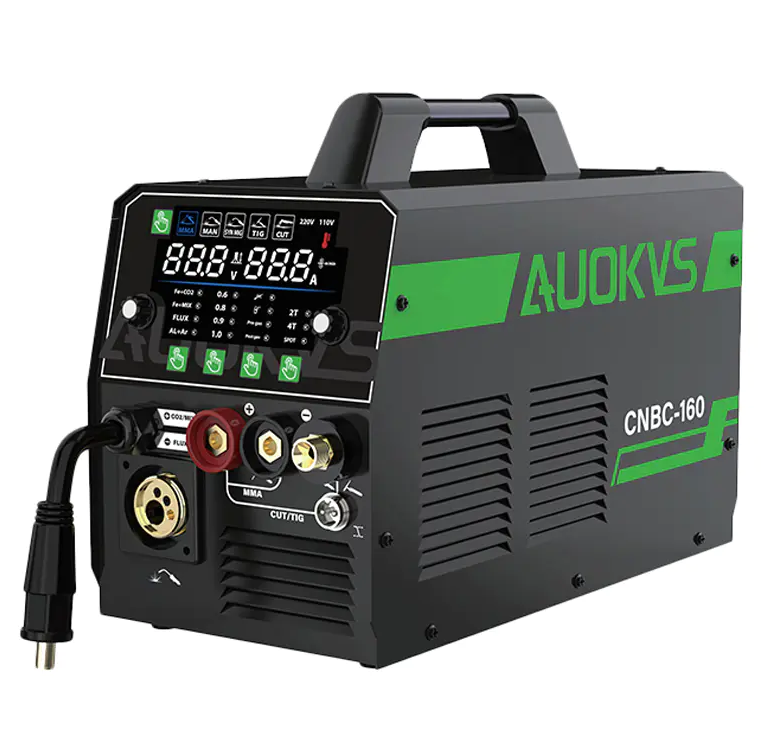Advantages and Applications of an OEM Pulse MIG Welder in Modern Metal Fabrication

Introduction to OEM Pulse MIG Welders
An OEM Pulse MIG Welder is a specialized welding machine designed to deliver precise, high-quality welds using pulsed metal inert gas (MIG) technology. Unlike standard MIG welders, pulse MIG machines control the welding current in short, repetitive pulses, allowing for better heat management, reduced spatter, and improved penetration. OEM versions provide additional advantages by allowing customization to meet specific voltage, amperage, and duty cycle requirements, making them ideal for industrial and professional applications.
Precision and Quality of Welds
The primary benefit of an OEM Pulse MIG Welder lies in its ability to produce consistent, high-quality welds. The pulsed current minimizes excessive heat, reducing the risk of warping or burn-through on thin metals. It also allows for smoother bead formation and cleaner surfaces, which decreases the need for post-weld finishing. This precision is particularly valuable when working on complex assemblies, automotive repairs, or thin-gauge sheet metals, where consistent performance is critical for structural integrity.
Versatility Across Materials and Thicknesses
Pulse MIG welders offer versatility in handling different metal types, including stainless steel, aluminum, and mild steel. OEM customization further enhances this capability by allowing operators to adjust pulse frequency, peak current, and background current to match specific material properties. This flexibility enables manufacturers to work efficiently across a range of thicknesses, reducing the likelihood of defects and improving productivity. Users benefit from a machine that can adapt to various applications without compromising weld quality.
Durability and Industrial Reliability
An OEM Pulse MIG Welder is built with durable components to withstand the rigors of continuous industrial use. High-quality electronics, robust transformers, and efficient cooling systems ensure stable operation even during long welding sessions. Regular maintenance, including monitoring consumables like contact tips and nozzles, helps extend the machine’s service life. The combination of sturdy construction and thoughtful design guarantees that welders can rely on the equipment for demanding projects while minimizing downtime and repair costs.
Customization and OEM Benefits
OEM customization provides significant advantages for professional welders and manufacturers. Clients can specify voltage ranges, duty cycles, and additional features such as digital displays, remote controls, or automated welding modes. This tailored approach ensures that the welder aligns perfectly with specific production requirements, enhancing workflow efficiency and reducing operator error. Custom configurations also allow businesses to differentiate their production processes and meet specialized industry standards.
Precision, Flexibility, and Reliability
In conclusion, an OEM Pulse MIG Welder combines advanced pulse technology with customizable features to deliver superior welding performance. Its precise control over heat input, adaptability across materials, and industrial-grade durability make it an essential tool for professional and industrial applications. By selecting an OEM pulse MIG welder, users gain a machine that balances precision, flexibility, and reliability, enabling consistent, high-quality welds across a wide range of projects.
Input Voltage: AC 220V
Input Power: 4700W
Welding Functions: Manual Arc Welding (MMA)
High-Frequency TIG Welding
Suitable Materials: Iron, galvanized pipes, carbon steel, stainless steel, low-alloy steel, etc.
Output Current Range:TIG: 10–120A
MMA: 40–120A
Compatible Electrode Diameter: 2.0mm / 2.5mm
Weldable Plate Thickness: 0.8mm – 4mm
Shielding Gas: Argon
Duty Cycle: 30%
- Art
- Causes
- Crafts
- Dance
- Drinks
- Film
- Fitness
- Food
- Games
- Gardening
- Health
- Home
- Literature
- Music
- Networking
- Other
- Party
- Religion
- Shopping
- Sports
- Theater
- Wellness
- IT, Cloud, Software and Technology


